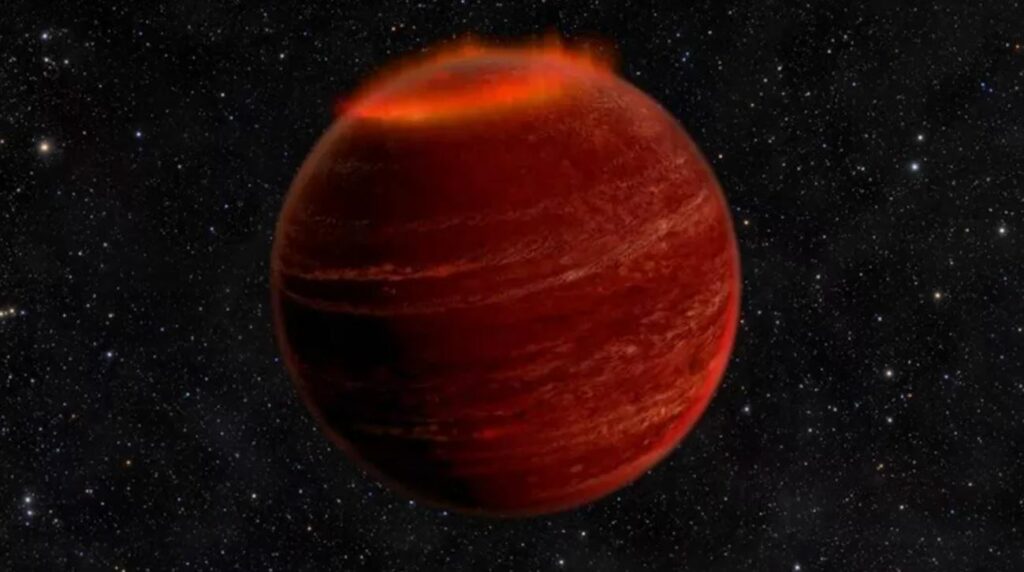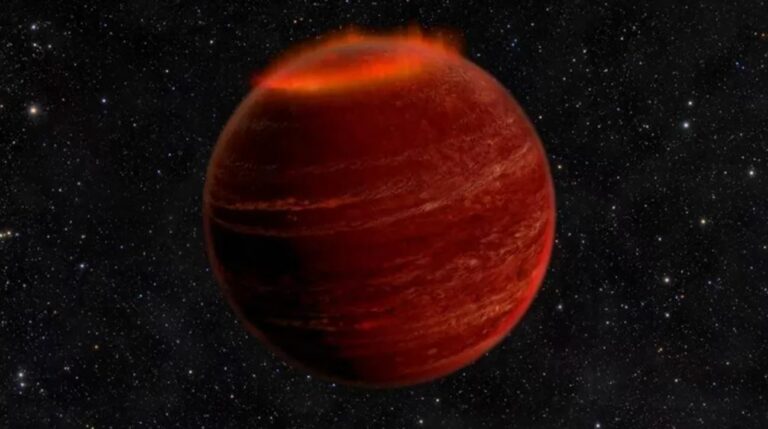Scientists Uncover Puzzling Celestial Entity Blurring the Line Between Planet and Star
In a groundbreaking discovery, researchers have encountered a peculiar celestial object that defies traditional categorization, challenging the established boundary between planets and stars.

Known as WD0032-317B, this extraordinary entity belongs to the class of brown dwarfs, which are luminous protostars composed of gaseous matter. While sharing a similar atmospheric composition with Jupiter, brown dwarfs exhibit a size range 13 to 80 times greater. At such masses, these objects initiate the fusion of hydrogen isotopes within their cores, yet lack the critical mass required for full-fledged, self-sustaining stellar fusion akin to our sun’s radiant blaze—imagine smoldering charcoal versus a roaring wood-fired oven.
Typically, brown dwarfs maintain a temperature of approximately 4,000 degrees Fahrenheit (2,200 degrees Celsius), considerably cooler compared to most stars that reach surface temperatures of around 6,700 degrees Fahrenheit (3,700 degrees Celsius).
However, WD0032-317B, situated 1,400 light-years away from Earth, defies conventional norms among brown dwarfs. In a study published on the preprint database arXiv and accepted by the journal Nature Astronomy, scientists measured the surface temperature of this enigmatic object, revealing an astonishing and scorching 13,900 degrees Fahrenheit (7,700 degrees Celsius). Such extreme heat causes the molecules within its atmosphere to dissociate into individual atoms, surpassing the temperature of our sun by several thousand degrees.
This phenomenon appears perplexing for a brown dwarf, but researchers have unraveled a crucial factor contributing to its uniqueness—its close proximity to the star it orbits. WD0032-317B orbits an ultra-hot white dwarf star in incredibly close quarters, resulting in a remarkably brief year that lasts a mere 2.3 hours. The gravitational forces at play have rendered the brown dwarf tidally locked, with one side permanently facing its star while the other remains in eternal darkness, as reported by Science Alert.
Consequently, the brown dwarf experiences extreme heating exclusively on its illuminated side. While the “day side” temperature soars to 13,900 degrees Fahrenheit, the “night side” remains comparably balmy, ranging from 1,900 to 4,900 degrees Fahrenheit (1,000 to 2,700 degrees Celsius). This stark temperature differential represents the most extreme variation ever observed on a substellar object, according to the researchers. Regrettably, these conditions are transient as the brown dwarf gradually disintegrates due to the breakdown of its molecular structure, a consequence of its close interaction with the host star.
The investigation of celestial bodies like WD0032-317B holds the promise of unraveling the mechanisms through which hot stars progressively consume their celestial companions. Furthermore, it contributes to the expanding body of knowledge concerning the prerequisites for stellar ignition.
Originally published on LiveScience.com.
Do not forget to share your opinion with us to provide you with the best posts !




0 Comments